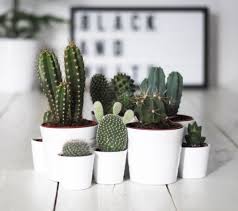Using Feng Shui Plants to Create Energy Balance in Your Home

Feng Shui is an ancient Chinese practice that emphasizes the importance of balancing the natural energy, or “Chi,” in a given space to promote well-being and harmony. One of the most important ways to enhance the flow of Chi in your home is through the strategic placement of plants. Plants have long been used in Feng Shui not just for their aesthetic appeal, but for their ability to bring positive energy, balance, and vitality into a space.
Incorporating plants into your home according to Feng Shui principles can improve the flow of energy, encourage abundance, and promote physical and mental health. This article explores how plants can help achieve these goals, the types of plants that are most beneficial for Feng Shui, and how to use them effectively to create a balanced and harmonious living environment.
1. The Role of Plants in Feng Shui
Plants are natural generators of energy. In Feng Shui, they represent the Wood element, which is associated with growth, vitality, and abundance. Wood also symbolizes creativity, family, and new beginnings. By carefully choosing the right plants for different areas of your home, you can amplify the energy you wish to invite into your space, such as wealth, health, or emotional balance.
Plants are also excellent air purifiers. They absorb carbon dioxide and release oxygen, which contributes to a fresh and rejuvenating environment. Moreover, certain plants are believed to enhance specific types of energy. For example, some plants can be used to attract prosperity, while others improve mental clarity or protect against negative energy.
When choosing plants for your home, it’s important to consider not just their appearance, but also their placement and symbolism according to Feng Shui principles. Properly selected and placed plants can help you achieve the perfect balance of energy in every room, promoting harmony, health, and happiness in your home.
2. Feng Shui Principles for Plant Placement
To maximize the benefits of Feng Shui plants, it’s important to place them in the right areas of your home. Each part of your living space corresponds to different aspects of life, such as wealth, relationships, career, and health. By placing plants in the appropriate areas, you can enhance the flow of positive energy in these specific areas of your life.
1. The Bagua Map
The Bagua map is a central tool in Feng Shui that divides your living space into nine sectors, each of which corresponds to different aspects of life. These sectors are:
- Wealth & Prosperity (Southeast)
- Fame & Reputation (South)
- Love & Relationships (Southwest)
- Family & Health (East)
- Center (Health & Balance)
- Creativity & Children (West)
- Knowledge & Self-Cultivation (Northeast)
- Career & Life Path (North)
- Helpful People & Travel (Northwest)
Each of these sectors is associated with a particular energy that can be amplified by specific plants. For example, the Southeast corner (Wealth & Prosperity) would benefit from plants that are associated with abundance and growth, while the Southwest corner (Love & Relationships) would be enhanced by plants that promote harmony and balance.
2. Choosing the Right Plants
There are a variety of plants that are considered auspicious in Feng Shui due to their positive energetic properties. Some plants are believed to attract prosperity, while others promote peace and health. Let’s take a look at some of the best plants to use in your home to balance the energy according to Feng Shui.
3. Feng Shui Plants for Different Purposes
1. Plants for Wealth and Prosperity
The Southeast corner of your home is the area most associated with wealth and prosperity, according to Feng Shui. To activate this energy and invite financial abundance into your home, certain plants are known to be particularly beneficial.
- Money Tree (Pachira Aquatica): The Money Tree is one of the most famous plants used for wealth in Feng Shui. Its braided trunk symbolizes strength and resilience, while its five leaves represent the five elements of Feng Shui: wood, fire, earth, metal, and water. The Money Tree is often placed in the Southeast corner to attract good fortune and prosperity.
- Jade Plant (Crassula Ovata): The Jade Plant, also known as the “Money Plant,” is another popular Feng Shui plant for attracting wealth. It is believed that the rounded, fleshy leaves resemble coins, making it a symbol of abundance and prosperity. Place the Jade Plant in the Southeast corner of your home to boost your financial well-being.
- Lucky Bamboo (Dracaena Sanderiana): Lucky Bamboo is a highly auspicious plant in Feng Shui. It’s believed to bring good luck, wealth, and fortune. The plant’s stalks can be arranged in various ways, with three stalks representing happiness, wealth, and longevity, and five stalks being particularly potent for attracting financial prosperity. Place Lucky Bamboo in the Southeast sector or near your front entrance to welcome wealth.
2. Plants for Health and Well-Being
The health of the occupants is another key aspect of Feng Shui, and certain plants are believed to support the energy of vitality and good health.
- Aloe Vera: Aloe Vera is known for its healing properties, both in terms of its medicinal uses and its ability to purify the air. In Feng Shui, Aloe Vera is considered a powerful plant for promoting health and well-being. Place it in the East sector of your home, as this area corresponds to family and health.
- Snake Plant (Sansevieria): The Snake Plant, also known as Mother-in-Law’s Tongue, is an excellent plant for purifying the air and promoting health. It’s considered an easy-care plant, making it ideal for almost any space. It’s best placed in the East sector of the home, as it helps to energize the space and improve the health of the inhabitants.
- Lavender: Lavender is renowned for its calming properties, and in Feng Shui, it is believed to improve emotional well-being and reduce stress. Its fragrant aroma can create a sense of peace and relaxation in any room, especially in bedrooms or living rooms. Place lavender in the Southwest sector to enhance harmony and health.
3. Plants for Love and Relationships
Plants can also be used to nurture relationships and enhance the energy of love in your life. The Southwest sector of your home is linked to relationships, so placing specific plants in this area can help strengthen your emotional connections.
- Peace Lily (Spathiphyllum): The Peace Lily is an ideal plant for the Southwest sector, as it promotes harmony and peace. Its elegant white flowers and lush green leaves help to balance energy in the home and create an environment of love and tranquility. It is also a symbol of purity, which can help deepen emotional bonds.
- Orchids: Orchids are often associated with love and beauty. In Feng Shui, orchids are believed to promote love, romance, and harmony in relationships. Place orchids in the Southwest corner of your bedroom or living room to enhance love energy.
- Rose (Rosa spp.): Roses, particularly red ones, are classic symbols of love and romance. Placing a rose bush or rose cuttings in the Southwest area of your home is said to attract love and strengthen existing relationships.
4. Plants for Protection and Clearing Negative Energy
In Feng Shui, there are also plants that are believed to protect against negative energy and help clear the space of stagnant Chi.
- Cactus: The cactus is often associated with protection, as its sharp thorns act as a shield against negative energy. While cacti can be useful for keeping harmful energy at bay, they should not be placed in the bedroom or living areas where peace is needed, as their energy is too intense for these spaces.
- Bamboo Palm (Chamaedorea Seifrizii): The Bamboo Palm is an excellent air-purifying plant that removes toxins and creates a calming atmosphere. It is believed to protect against negative energy and bring balance to the space. Place it in the Northeast or Northwest sectors for optimal effect.
- Spider Plant (Chlorophytum comosum): The Spider Plant is known for its air-purifying properties and is often used to cleanse a space of negative energy. It’s a great addition to your home’s entryway or living room, where it can help clear the space of stagnant Chi.
4. General Tips for Using Plants in Feng Shui
- Keep Plants Healthy: Dead or wilting plants can bring negative energy into a space. Always ensure that your plants are well-maintained, watered, and trimmed.
- Avoid Sharp Leaves: Plants with sharp or spiky leaves (such as cacti) should be placed in areas where they will not create a negative, aggressive energy. Avoid placing these plants in bedrooms or relaxation areas.
- Use Plants to Soften Corners: If your home has sharp corners or edges (such as from furniture or architecture), use plants to soften the energy. Round-leaved plants are best for this purpose, as they promote harmony and flow.
5. Conclusion
Plants are an essential part of Feng Shui and can be incredibly effective in creating a balanced, harmonious, and prosperous living environment. By strategically placing plants in different areas of your home, you can invite positive energy that supports your health, wealth, relationships, and emotional well-being. Whether you’re seeking to improve your financial situation, attract love, or simply enhance the overall energy in your home, incorporating plants into your Feng Shui practice is a powerful way to achieve these goals.
Remember that Feng Shui is all about balance, so be mindful of the plants you choose and how you arrange them. With the right plants in the right places, you can transform your home into a sanctuary that promotes peace, abundance, and harmony.

